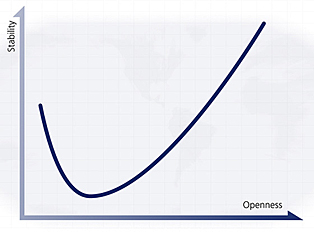Why don't you include a quote from some source that makes the basis of your claim?
Any closed interval [a, b] of real numbers is Lebesgue measurable, and its Lebesgue measure is the length b−a. The open interval (a, b) has the same measure, since the difference between the two sets consists only of the end points a and b and has measure zero.
(
http://en.wikipedia.org/wiki/Lebesgue_measure )
|b−a| > 0 even if [a,b] is (according to traditional math) no more than a set of 0-dimensional elements.
So go ahead and describe the way OM handles the task as opposed to the way traditional math does it.
Very simple. OM asserts that |b−a| > 0 is possible only by, at least, 1-dimensional\0-dimensional co-existence, where 1-dimensional element is the minimal non-local expression and 0-dimensional element is the minimal local expression of this co-existence.
Actually, without non-locality\locality co-existence, no Lebesgue measurable can be done, including 0 measurement, which is defined only w.r.t an element that its measurement > 0, exactly as an element that its measurement > 0 is defined only w.r.t an element that its measurement = 0.
It means that non-locality\locality are mutual
AND independent w.r.t each other (their different ids are defined and saved under mutuality, such that being mutual
AND independent means that the measured is not totally mutual
AND not totally independent).
Being not totally mutual
AND not totally independent is exactly the organic realm.
So according OM, the real line is at least the co-existence of 1-dimensional element
AND 0-dimensional elements along it, such that no amount of 0-dimensional elements has the power of the continuum, which is at least length > 0 (a property that at least 1-dimensional element has under 1-dimensional\0-dimensional co-existence).
Suppose the curve is randomly drawn and you need to know its length.
It can be done only under 1-dimensional\0-dimensional co-existence.
---------------------
This co-existence does not exist by context-dependent-only reasoning.
For example, Cantor set elements are irreducible into disjoint points, simply because no 1-dimensional element is reducible to 0-dimensional element, so the assertion that Cantor set has Lebesgue measure 0 is false, and this fallacy is exactly the reflection of context-dependent-only reasoning on the result, which can't comprehend cross-contexts form like 1-dimensional element among 0-dimensional elements, which are context-dependent forms w.r.t it (by analogy, each point has a single location along the line, where the line does not have a single location w.r.t to any given point along it).


